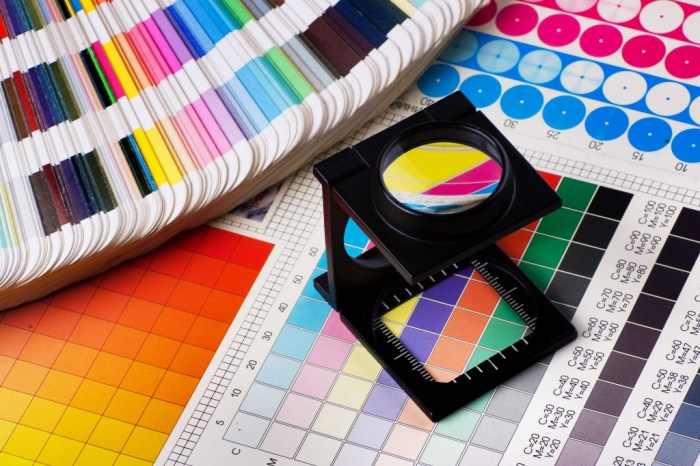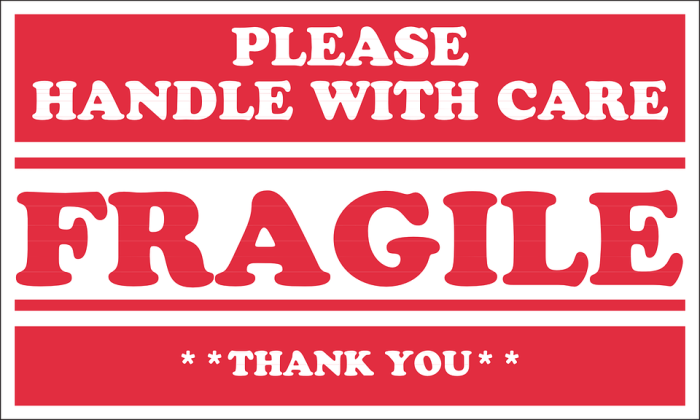
Kicking off with Print Packaging, this essential aspect of modern business plays a pivotal role in how products are presented to consumers. Print packaging isn’t just about protection; it’s a critical marketing tool that influences buying decisions and reflects a brand’s identity.
This guide will delve into the various materials used, the significance of print packaging in consumer behavior, employment opportunities in the sector, and the latest innovations shaping the industry. Whether you’re a brand owner, a job seeker, or just curious about the topic, there’s something for everyone.
Print Packaging Overview

Print packaging plays a crucial role in modern industries as it blends functionality with aesthetics, directly influencing consumer choices and brand perception. The packaging not only protects the product but also serves as a marketing tool that communicates the brand’s identity and values. In a competitive market, effective print packaging can make a significant difference in attracting customers and enhancing their overall experience.Various types of print packaging materials are utilized in production, each serving different purposes and offering unique benefits.
The selection of materials impacts not just the appearance of the packaging but also its sustainability and cost-effectiveness. Understanding these materials is essential for businesses aiming to optimize their packaging strategies.
Types of Print Packaging Materials
A wide variety of materials are used in print packaging, each varying in properties and applications. Choosing the right material is vital for ensuring product integrity and appealing to target consumers. Here are some commonly used materials:
- Paperboard: A versatile and lightweight material that is easy to print on and can be molded into various shapes, making it ideal for boxes and cartons. It is biodegradable, which enhances its appeal for eco-conscious brands.
- Plastic: Known for its durability and flexibility, plastic packaging can be used for a range of products, from food to cosmetics. It can be printed with high-quality graphics, but its environmental impact raises concerns among consumers.
- Corrugated Fiberboard: Often used for shipping and storage, this material provides excellent protection due to its layered structure. It’s lightweight yet strong, making it a popular choice for e-commerce packaging.
- Glass: While not a traditional print packaging material, glass allows for high-quality printing and is highly effective in preserving product freshness. It’s commonly used for beverages and premium products.
- Metal: Used primarily in food and beverage packaging, metal containers (like cans) provide excellent protection and extend shelf life. They can also be printed with vibrant designs that attract attention.
Impact on Consumer Behavior and Branding
Print packaging significantly influences consumer behavior and brand loyalty. The design, material, and messaging on packaging can evoke emotions and shape perceptions. For instance, a well-designed package can create a positive first impression, encouraging consumers to choose one product over another. Additionally, packaging serves as a form of communication, conveying essential information about the product, such as ingredients, usage instructions, and sustainability claims.
The use of eco-friendly materials can attract consumers who prioritize environmental responsibility.
“Packaging is the silent salesman; it speaks volumes about the product inside.”
Research has shown that attractive packaging can lead to increased sales. For example, brands that invest in colorful designs and innovative packaging formats often see higher conversion rates. Moreover, social media has amplified the importance of print packaging as consumers share their unboxing experiences, further amplifying brand visibility.
Employment in Print Packaging Sector
The print packaging sector presents a range of job opportunities that cater to various skills and interests. As consumer demand evolves, so does the need for innovative packaging solutions, making this industry an exciting place for prospective employees. Understanding the job roles available, the skills required, and potential career advancement paths is crucial for those considering a career in print packaging.
Job Roles in Print Packaging
The print packaging industry encompasses a variety of roles that contribute to the creation, design, and production of packaging materials. Each position plays a distinct part in ensuring that products are not only protected but also visually appealing to consumers. Here are some common job roles within this sector:
- Packaging Designer: Responsible for creating visually appealing and functional packaging designs that align with brand identity.
- Production Manager: Oversees the manufacturing process, ensuring efficiency, quality, and adherence to timelines.
- Quality Control Inspector: Monitors the production process and final products to ensure they meet specified standards.
- Printing Technician: Operates and maintains printing machinery, ensuring high-quality output of printed materials.
- Sales Representative: Engages with clients to sell packaging solutions, understanding their needs and providing tailored options.
Required Skill Sets for Print Packaging Positions
Skills required for employment in the print packaging sector vary by role, but certain competencies are universally beneficial. Having a mix of technical and interpersonal skills can significantly enhance job performance and career prospects. Here are some essential skill sets:
- Creativity: Vital for roles like packaging design, where innovative and attractive designs can differentiate products in the marketplace.
- Attention to Detail: Critical for quality control inspectors and production managers to ensure high standards are consistently met.
- Technical Proficiency: Knowledge of printing technologies and software is essential for technicians and designers alike, including familiarity with design software like Adobe Illustrator.
- Communication Skills: Important for sales representatives and team collaboration to effectively convey ideas and collaborate on projects.
- Problem-Solving Skills: Useful across various roles, enabling employees to address challenges and improve processes.
Career Advancement Opportunities in Print Packaging
The print packaging sector offers several pathways for career advancement, allowing employees to progress and specialize as they gain experience. Possibilities include:
- Senior Designer or Art Director: Experienced designers may advance to senior positions where they lead design teams and oversee larger projects.
- Operations Manager: Production staff can move into managerial roles, focusing on optimizing production processes and team management.
- Quality Assurance Manager: Quality control inspectors with experience may ascend to management positions overseeing quality assurance strategies and compliance.
- Sales Manager: Successful sales representatives can advance to management roles, directing sales teams and strategizing market approaches.
- Entrepreneurial Ventures: Industry veterans may choose to start their own packaging companies, utilizing their expertise to carve out niche markets.
Innovations in Print Packaging
The print packaging industry is rapidly evolving, driven by advancements in technology and a growing demand for sustainable solutions. Innovations are not just enhancing the efficiency of packaging production but also improving the overall user experience. This segment explores the latest technologies shaping the future of print packaging, the emerging sustainable practices being widely adopted, and the critical role of design in enhancing functionality.
Latest Technologies in Print Packaging Production
Technological advancements are revolutionizing print packaging production, leading to more efficient, high-quality output. Digital printing technologies, for instance, allow for shorter runs and customized designs without significant setup costs. Some notable technologies include:
- Inkjet Printing: This method provides precise color printing with minimal waste and quicker turnarounds, making it ideal for smaller batch sizes.
- 3D Printing: Allows for the creation of prototypes and unique packaging designs, enabling brands to experiment without large-scale production costs.
- Smart Packaging: Incorporates sensors and QR codes that provide additional information or enhance customer interaction, thus merging functionality with enhanced user engagement.
Sustainable Practices in Print Packaging
As environmental concerns rise, the print packaging sector is increasingly adopting sustainable practices to reduce its ecological footprint. Brands are realizing that sustainability not only meets consumer demand but also enhances their market appeal.Several sustainable practices include:
- Use of Recycled Materials: Many packaging companies are now utilizing recycled paper and cardboard, significantly reducing the demand for virgin materials.
- Biodegradable Inks: The shift towards using inks made from natural resources helps minimize the environmental impact post-consumer usage.
- Eco-friendly Coatings: These coatings provide protection without harmful chemicals, ensuring that the packaging is compostable and safe for the environment.
Role of Design in Enhancing Functionality
The design of packaging plays a pivotal role in enhancing not only the aesthetic appeal but also the functionality of print packaging. Innovative design solutions make packaging easier to use while ensuring it meets practical requirements.Key aspects of design in print packaging include:
- User-Centric Design: Focusing on customer needs leads to more intuitive packaging that enhances usability and creates a positive consumer experience.
- Structural Innovation: Unique structural designs can improve protection, reduce material usage, and optimize shipping efficiency.
- Brand Storytelling: Effective design communicates the brand’s message and values, fostering stronger brand loyalty through visual engagement.
Innovations in print packaging not only address production efficiency and sustainability but also enhance user experience through thoughtful design.
Final Conclusion

In conclusion, Print Packaging is an ever-evolving field that combines creativity, technology, and sustainability. Understanding its nuances not only aids businesses in effective branding but also opens doors to exciting career opportunities. Embrace the power of print packaging and stay ahead in this dynamic industry!
Essential FAQs
What is the primary purpose of print packaging?
The primary purpose of print packaging is to protect products while also serving as a marketing tool to attract consumers.
What materials are commonly used in print packaging?
Common materials include cardboard, paper, plastics, and biodegradable options for eco-friendly packaging solutions.
What career opportunities are available in the print packaging sector?
Opportunities include roles such as graphic designers, production managers, quality control specialists, and sales representatives.
How does print packaging affect consumer decisions?
Effective print packaging can enhance brand recognition and influence consumer perception, leading to increased sales.
What innovations are currently emerging in print packaging?
Innovations include smart packaging technologies, sustainable materials, and advanced printing techniques that improve design and functionality.





